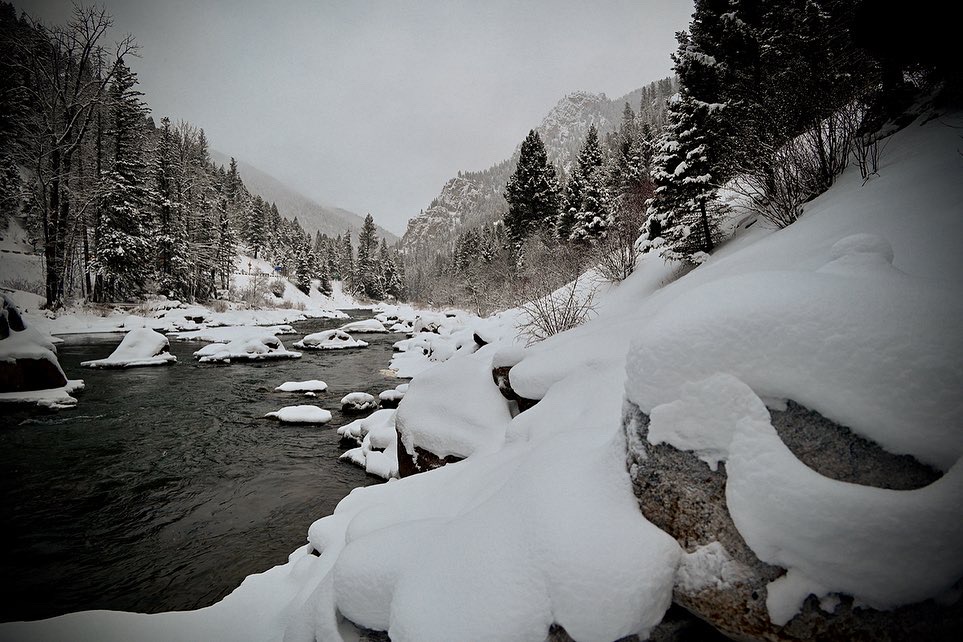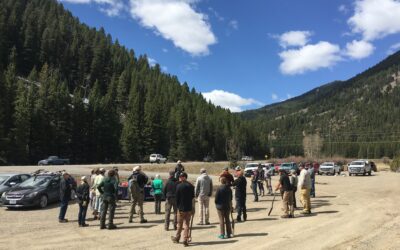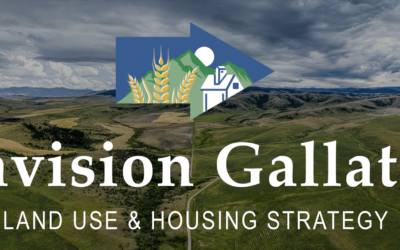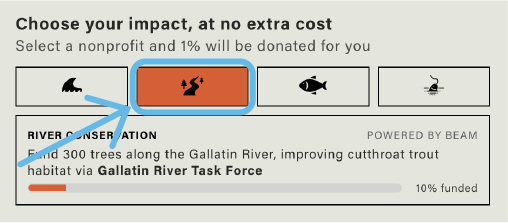While we can’t control the amount of snowfall, we can control how we actively engage in our own sources of water use and conservation, being mindful of how those activities are directly related to drought and water supply. It is important to consider water conservation measures now, and not wait until we are faced with extreme drought status to consider how our actions make a positive impact. Any conservation that happens now will make us more resilient when temperatures rise, and the tougher summer months hit.
Snowpack & Water Conservation in our Community
Groundwater
Our community pulls from the same groundwater aquifer year round; an aquifer that is fed by precipitation in the form of snowfall, snowmelt, and eventually rain. This aquifer provides us with our community drinking water, serves as the source that feeds the Gallatin, and is our ultimate defense against wildfire.
Precipitation
Precipitation is beneficial to our groundwater in any form, and while we are grateful for any and all snowpack that we can accumulate over the winter months, we cannot assume that it will stay long enough to be reliable as a source for our community water year round. In fact, that’s where intentional water conservation practices come into play.
Snowmelt
The slow melt of snow is ideally what we are looking for to preserve our water sources. However, being in a drought-prone region and faced with elements of climate change, spring seasons are less predictable, and summers are only getting hotter and drier, leading to faster snowmelt, lower streamflows, and more wildfires.
Luckily, there are ways to think about and participate in water conservation, even in the winter months. In fact, water conservation is the most cost effective and environmentally friendly way to thrive through drought, stretch water supplies, and protect the Gallatin River.
Water Conservation during the Winter
The Big Sky Water Conservation Program outlines several tactics that are easy to implement, and which can go a long way for conserving our water in all months and seasons of our year. Specifically:
- Check for leaky pipes.
Pipes become vulnerable in winter, if not properly winterized or used regularly. Pipes can be damaged by freezing and thawing water, which can lead to minor leaks that may not cause significant damage to the plumbing system, but can be a tremendous source of wasted water.
. - Upgrade your fixtures and apply for rebates.
By participating in our indoor and outdoor rebates, you are passing on those benefits to the Gallatin by conserving community water sources. And, you are simultaneously saving money on your residential or commercial water and energy bills; it’s a win-win. You can do this by replacing your home or business faucets, toilets, and out-dated fixtures and appliances with WaterSense options will do wonders to cut down on your water use, and your bill.
. - Get a head start on planning your water-wise garden.
Landscape irrigation is the #1 use of water in Big Sky during the summers. While we aren’t tending to our plants now, winter is the perfect time to plan your landscape for spring. By laying out plenty of ways to reduce your outdoor water use now you can set yourself up for getting these established at the first sign of spring. Consider how a native landscape could reduce the amount of irrigation needed to make your home and garden beautiful.
Being more mindful of water conservation is something we hope you can get behind, because every drop counts.
Support
our mission.
Get your
hands dirty.
Join us for
our events.
Stay Connected
Read More
Gallatin River Task Force Member Spotlight: Joanna McCoy
This month's Gallatin River Task Force Member Spotlight: Joanna McCoy gained her deep affection for the outdoors from her father, and from growing up on a dairy farm on the Little Sandy River in Kentucky. Opportunities through college courses and experiences along the...
Thank You to Our Upper Deer Creek Restoration Project Volunteers!
This Earth Day, the Gallatin River Task Force is celebrating the incredible success of the Upper Deer Creek restoration project, and a huge part of that success goes to our amazing volunteers! Healthy Rivers, Healthy Planet Clean water is essential for life on earth,...
Envision Gallatin FLUM Comment Guide
Gallatin County is entering the second phase of Envision Gallatin with the objective of creating a Future Land Use Map (FLUM) and Housing Strategy (HS). The FLUM will help inform future zoning regulations, guide development for the county, and ultimately help protect...
Water Wise Landscapes in Big Sky Montana
Water Wise Landscapes in Big Sky - Is your Landscape Water-Wise? Did you know that landscape irrigation use spikes by a whopping 160% during summer months? That's a lot of water, and a significant portion is lost to evaporation, especially when watering during the...








